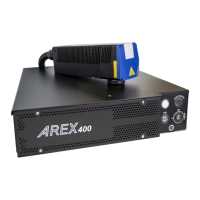Risk Assessment
User Manual 85
Risk Assessment
Core of the Machine Directive are “Risk Assessment” and “Risk Reduction” pro-
cess.
EN ISO 12100:2010 is aimed to support manufacturers during Risk Assessment.
Machinery must be designed to be operated, adjusted and maintained without
putting persons at risk when these operations are carried out.
Risk Assessment must also taking into account any reasonably foreseeable mis-
use of the system.
RISK ASSESSMENT is based on a clear understanding of the machine limits and
functions and the tasks that may be required to be performed at the machine
throughout its life.
During Risk Assessment all the Hazards must be identified and analyzed for all
the possible tasks of the machine (such as maintenance or cleaning).
As an example, for a “Laser Processing Machine” the hazards list will include
laser-related hazards like:
• Direct, scattered, diffused and indirect laser radiation
• Fumes, particles and vapors from target material
• Fire/explosion from target material
Refer to EN ISO 11553-1 for a complete list.
Each Hazard represent a risk of harm, and each Risk must be estimated and
quantified in terms of:
• THE SEVERITY OF POTENTIAL INJURY
• THE PROBABILITY OF ITS OCCURRENCE
Once the Risk Estimation is completed, next step is the Risk Reduction.
The 2006/42/EC Directive provides a hierarchy of measures for eliminating the
risk:
1. Inherently Safe Design: Eliminate/reduce risks as far as possible by machine
design
2. Additional Protection Devices: Install safeguarding and protective measures
in relation to risks that cannot be eliminated by design
3. Personal Protective Equipment and/or Training
In case of Protective Devices It will be necessary to ensure that access can only
be gained while the machine is safe. Protective measures such as interlocked
guard doors and/or trip systems will be required.
THERE is no ONE SINGLE SOLUTION TO SAFETY but a SYSTEMATIC PROCESS.
RISK ASSESSMENT based on a clear understanding of the machine limits and
functions and the tasks that may be required to be performed at the machine
throughout its life.
RISK REDUCTION is then performed if necessary and safety measures are
selected based on the information derived from the risk assessment stage. The
manner in which this is done is the basis of the SAFETY STRATEGY for the
machine
STEP 1
RISK ASSESSMENT
STEP 2
RISK REDUCTION
STEP 3
SAFETY FUNCTION
DESIGN AND TEST

